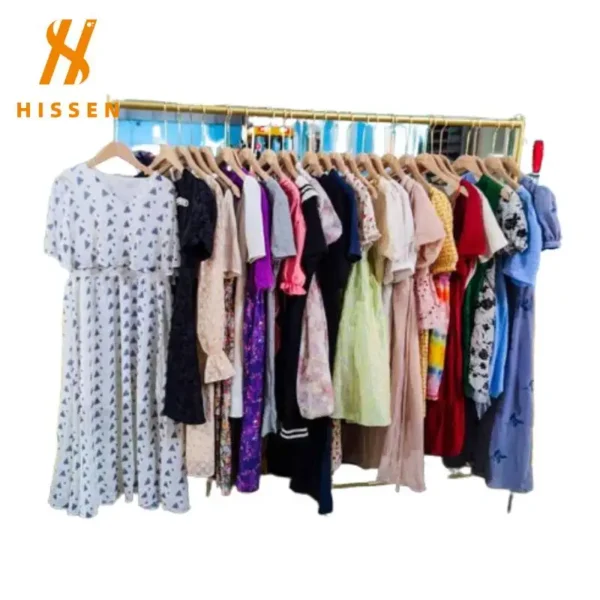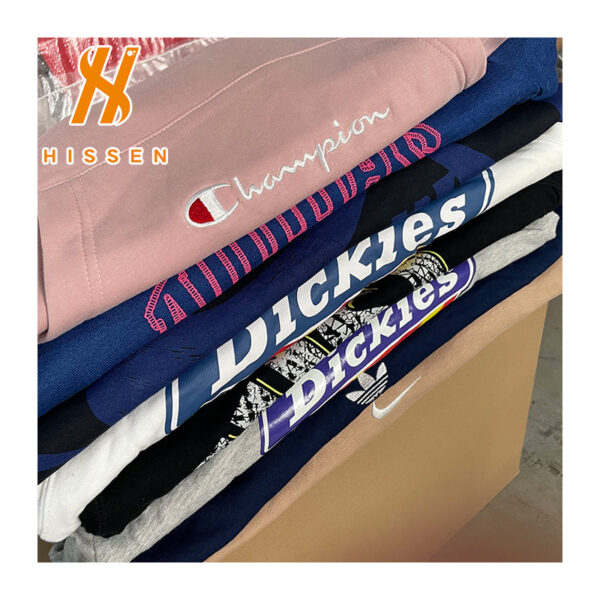The second hand clothes business is one of the most accessible and rapidly growing retail sectors across many African cities — and Uganda is no exception. Low startup costs, steady consumer demand for affordable fashion, and a robust informal market make the second hand clothes business a viable option for new entrepreneurs. Whether you plan to open a small market stall in Kampala, sell through WhatsApp and Facebook groups, or build a modest online shop, understanding the local market is the first step to success.
This guide focuses on how to start a second hand clothes business in Uganda. It walks through the practical steps that matter most: understanding demand, handling legal requirements, sourcing reliable stock, arranging store layout, and pricing items competitively. The aim is pragmatic — not academic — so you can take clear actions from day one.
If you’re ready to turn a small capital into a steady income stream, let’s begin with a close look at the Ugandan market and the types of used clothes wholesale that sell best.
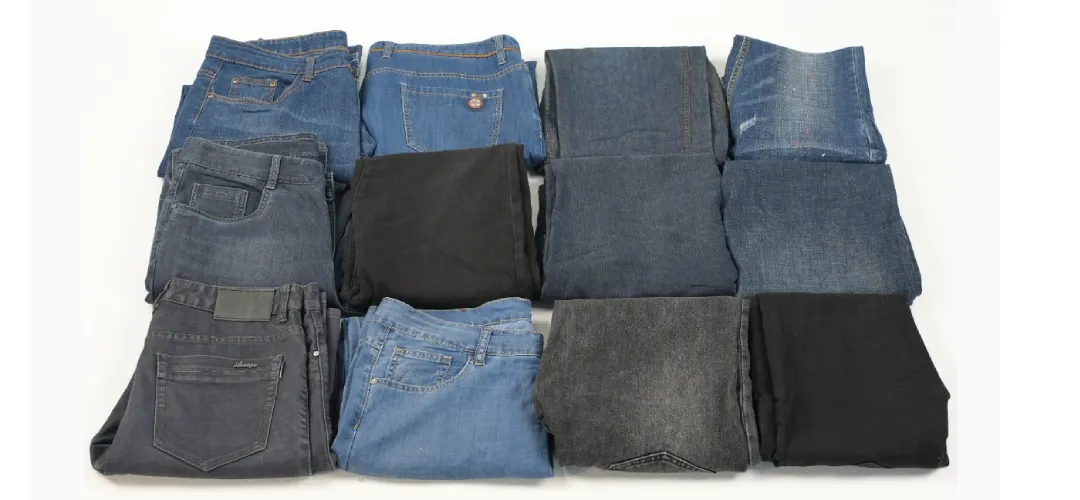
Understanding the Second Hand Clothes Market in Uganda
Overview of the Market
Uganda has a long-established market for pre-owned clothing. Second-hand garments arrive through a mix of local donations, small-scale collectors, and larger wholesale imports. Cities such as Kampala and Jinja host busy markets where traders sort and resell bundles every day. Buyers range from low-income families seeking affordable basics to young urban shoppers hunting for branded or vintage items.
Different customer groups look for different things. If you plan your stock around clear customer segments you can stock smarter and reduce unsold items. Common high-turnover categories include:
- Used T-shirts, second hand jeans, and other used everyday casual wear.
- Seasonal outerwear when in demand.
- Branded and lightly used items that still look nearly new.
- Children’s clothing and basic household textiles.
Because Uganda has a generally warm and tropical climate throughout the year, with only short rainy and cooler seasons, most customers prefer light, breathable clothing. Focusing on Used Summer Clothes Wholesale helps your second hand clothes business in Uganda meet this demand and reduces the risk of unsold inventory.
Opportunities and Challenges
Starting a second hand clothes business in Uganda has clear upsides but also practical risks. Opportunities are as fellow:
- Low startup capital compared with many retail businesses.
- Healthy margins when you buy quality wholesale lots and sell by piece.
- Growing interest in sustainable, pre-loved fashion among some urban buyers.
- Social media and messaging apps make customer reach inexpensive.
Here are also challenges for a second hand clothes business in Uganda:
- Quality control is critical: poor inspection reduces repeat customers.
- Strong competition in main markets—need clear differentiation.
- Import rules, tariffs, and transport costs can squeeze margins for imported lots.
- Seasonal demand means inventory must be managed to avoid dead stock.
Understanding these basics will help you decide which customer segment to target, which categories to prioritize, and what risks to plan for before you invest.
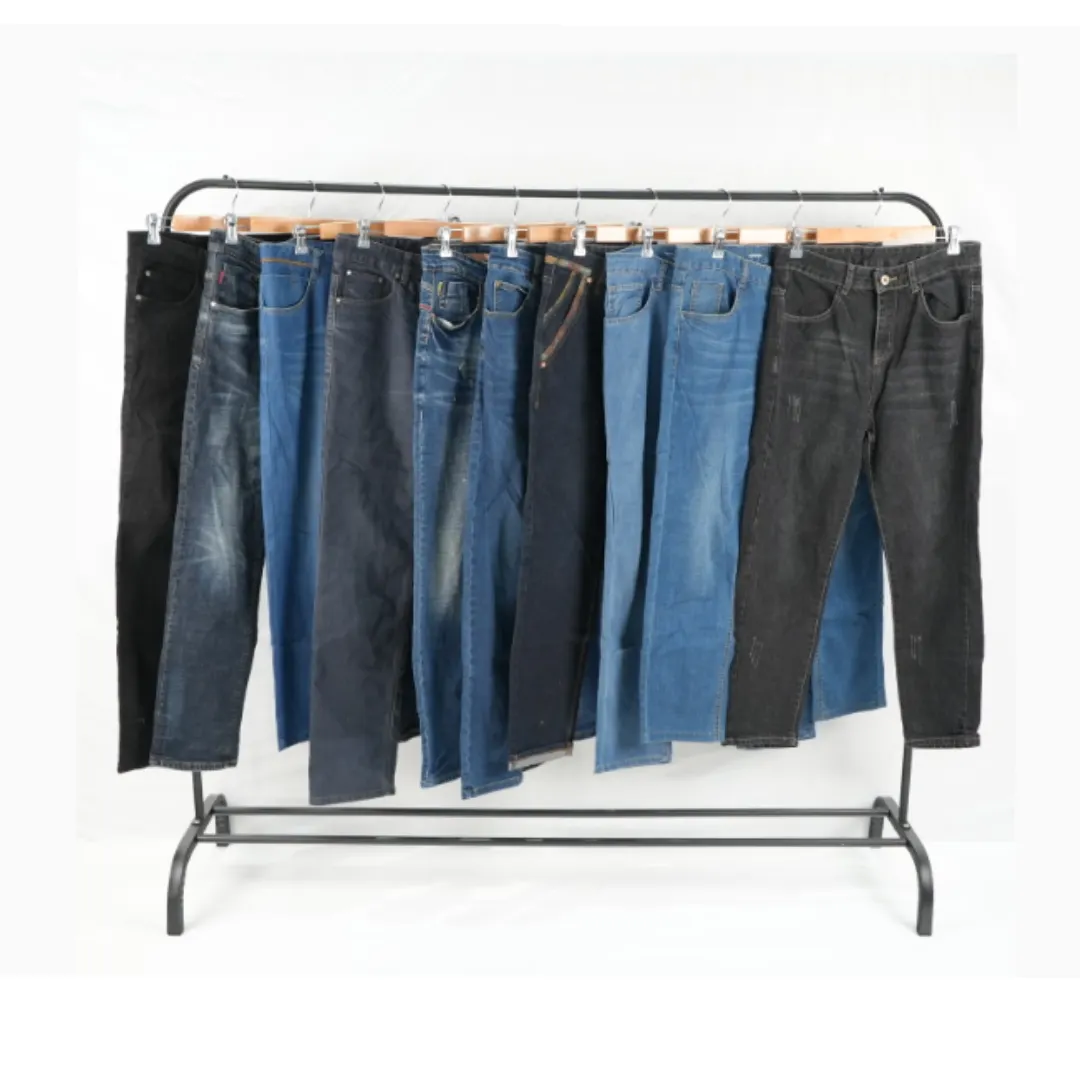
Legal Requirements and Business Registration
Choosing a business structure
Before starting your second hand clothes business, choose the right legal form affects tax, liability, and how you hire staff. Common options for a second hand clothes business in Uganda include:
- Sole proprietorship — easiest and cheapest to start; owner has full control but also full personal liability.
- Partnership — simple for two or more people; profits and liabilities are shared.
- Limited company (private limited) — better for limiting personal liability and scaling, but requires more paperwork and compliance.
- Branch of a foreign company — possible if you are expanding from abroad; requires extra registration steps.
Each option has trade-offs: start simple if you are testing the market, choose a limited company if you plan to import at scale or take on partners and staff. For step-by-step incorporation rules and forms, the Uganda Registration Services Bureau (URSB) provides official guidance.
Registration steps and necessary licences
Below are the practical steps most small traders follow to be legally compliant in Uganda. Use these as a checklist for your second hand clothes business; local rules may vary slightly by district or city.
- Register the business name or company with URSB. Complete name reservation, prepare required documents, and file for registration or incorporation.
- Obtain a Tax Identification Number (TIN) from the Uganda Revenue Authority (URA). Every business must register for tax; URA offers an instant TIN option via its e-services portal.
- Apply for a local trading licence. If you operate in Kampala or other municipalities you must get a trading licence from the respective city/municipal authority. Fees and grading depend on business type.
- Check sector-specific permits if you import. Importers must comply with customs and any special import rules. Note: the used-clothing trade has been under political and policy scrutiny in recent years; proposals and policy notes about restricting imports have appeared, so check current import rules before committing to large overseas purchases.
- Consider additional registrations if you employ staff. Register for social security or worker-related obligations as required.

Where to Buy Bale of Second Hand Clothes in Uganda?
Local vs. Imported Stock
Finding good-quality stock is one of the first challenges for anyone starting a second hand clothes business in Uganda. Most traders rely on two main approaches:
- Local sourcing — buy from thrift shops, donation centres, or local collectors. For example, in Kampala’s Owino Market, traders can inspect and handpick items daily. Advantages include lower transport costs, faster restocking, and the ability to check fabric and stitching in person.
- Imported stock — purchase bales in bulk from international suppliers, where surplus clothing is sold at wholesale rates. These bales often contain branded or nearly new items that sell quickly in Uganda. However, keep in mind import duties, customs clearance, and possible shipping delays.
Developing trustworthy relationships with suppliers is key. A supplier who consistently delivers clean, sorted lots saves time and reduces the risk of unsellable items. Second hand clothes businesses often start with a small shipment to test the supplier before committing to larger orders.
If you want more details about used clothes suppliers in Uganda, see Top 5 Wholesale Second Hand Clothing Suppliers In Uganda.
Evaluating Quality
When sourcing used clothes wholesale, careful inspection is essential for keeping customers satisfied and reducing returns. Key steps include:
- Check for stains, holes, missing buttons, or fraying seams.
- Separate items by category: men, women, children. This makes browsing easier and helps you set prices appropriately.
- Sort by season — second hand summer garments for hot months, used winter clothes for colder months.
- Identify branded items that are lightly used; these often attract repeat buyers and can be sold at higher margins.
Taking a few extra minutes to check each item and organize your stock will improve both sales and reputation in the second hand clothes business. Customers appreciate neatly sorted, well-presented clothes, which encourages loyalty and word-of-mouth referrals. If you need to know more about used clothes wholesale, request here.
Setting Up Your Second Hand Clothes Business
Choosing a Location
Picking the right location can make or break a second hand clothes business. In Uganda, many small traders start in bustling markets before moving to more permanent shops. Consider:
- Busy markets and streets — areas like Owino Market or Nakasero Market in Kampala see hundreds of shoppers daily. Setting up a stall here increases your chances of regular sales.
- Rental affordability — a small stall may cost less, but space is limited. Weigh your budget against potential foot traffic. Some traders even rent storage space nearby and rotate stock daily to reduce costs.
- Online selling — social media platforms such as Facebook Marketplace, Instagram, or WhatsApp groups let you reach customers across the city or country. You can start small online, then expand to a physical location once demand grows.
Choosing your location depends on your target audience, available funds, and whether you prefer a physical presence or a flexible online-first approach.

Store Layout and Display
In the second hand clothes business, how you display your clothes affects both sales and customer perception. Simple, practical steps include:
- Organize by category — keep used women’s clothes, men’s, and children’s items separate. This helps shoppers find what they need quickly.
- Highlight popular or branded items — place premium or lightly used branded clothes at eye level.
- Keep it neat — fold t-shirts, hang jackets properly, and keep aisles clear. A tidy stall gives the impression of quality.
- Storage and rotation — use racks, bins, and shelves to prevent damage. Rotate stock regularly so fresh items are always visible.
Even small touches, like clear signage or a well-organized rack, make a difference. Customers notice a clean, organized shop and are more likely to return or recommend you to friends.
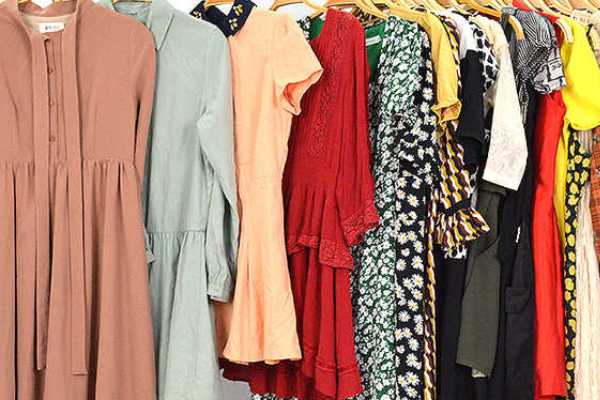
Pricing Strategy of Second Hand Clothes Business
Pricing correctly is essential to attract customers while maintaining a healthy profit margin. In Uganda, it depends on quality, brand, and local demand. Here are practical tips:
- Base price on quality — lightly used or branded items can be sold higher than generic pieces. Check for stains, wear, or missing buttons, and adjust the price accordingly.
- Consider brand value — items from well-known brands, such as used Zara clothes, often sell faster and can fetch better margins.
- Factor in local demand — research what customers in your area buy most. For example, t-shirts and jeans often move quickly, while formal coats may sell slower in hot months.
- Set bundle or discount deals — selling three t-shirts for a fixed price encourages larger purchases and clears slow-moving stock.
- Keep margins realistic — calculate the cost per item, including purchase, transport, and stall fees, then add a markup that keeps items affordable but profitable.
Pricing is not static. Track which items sell fast and which sit for weeks. Adjust prices regularly and consider seasonal changes. For instance, winter jackets sell better at the start of the rainy season, while shorts and summer dresses peak during the hot months.
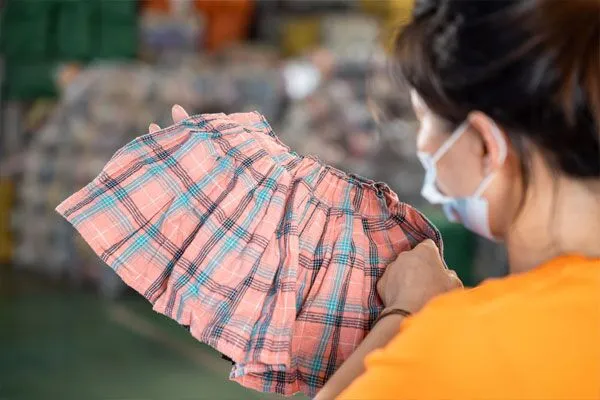
Managing Operations and Growth
Efficient operations and careful planning are key to running a successful second hand clothes business in Uganda. Small improvements in stock management, customer service, and scaling can make a big difference.
Inventory Management
Keeping track of what you have helps avoid stockouts and wasted space:
- Sort by category and season — separate men’s, women’s, children’s, summer, and winter clothes. This makes it easier to find items and track popular products.
- Monitor fast-moving items — note which items sell quickly and which sit for weeks. Adjust orders to meet demand and avoid excess stock.
- Use simple tools — even a basic spreadsheet or notebook can track purchases, sales, and profits. Over time, you can adopt simple inventory apps to automate tracking.
Customer Service
Customer satisfaction supports repeat sales and referral growth. Staff should greet customers, answer questions, and assist in locating products. Complaints should be handled with exchanges or small discounts for defective goods. Regular customers can be informed of new arrivals or promotional activities to encourage return visits.
Scaling the Business
Once your second hand clothes business is stable, consider growth opportunities:
- Expand product lines — add used branded clothes to attract higher-end customers.
- Open additional outlets — start small in another market or neighborhood with proven demand.
- Explore online sales — a small website or active social media shop allows you to reach customers beyond your immediate area.
- Stay updated on trends — monitor local fashion, seasonal demand, and customer preferences to keep stock relevant.
Small, consistent improvements in operations and customer service often lead to steady growth. Even minor changes, like better organization or timely communication, can significantly increase sales over time.

Tips for Success in Uganda
Starting and running a second hand clothes business in Uganda can be profitable if you follow some practical tips. Small details often make a big difference in building reputation and attracting repeat customers.
- Focus on quality — always inspect items carefully. Customers return to shops where clothes are clean, intact, and well-presented.
- Know your customers — observe buying patterns, ask for feedback, and adjust stock based on demand.
- Stay organized — keep stock sorted by category, season, and brand. A tidy stall or warehouse saves time and reduces losses.
- Use social media smartly — post clear photos, highlight new arrivals, and interact with buyers.
- Adapt to trends — monitor seasonal demand, fashion changes, and branded item popularity to keep your inventory relevant.
- Network with other traders — attending local fairs, markets, or online groups can help you find suppliers, exchange tips, and spot opportunities early.
- Be patient and consistent — growth takes time. Consistently applying good practices in sourcing, display, pricing, and marketing pays off in the long run.
Following these tips helps you reduce risk, improve sales, and establish a loyal customer base. Remember, even small improvements in service, stock organization, or marketing can lead to noticeable growth over time.
Conclusion
Running a second hand clothes business in Uganda can be both practical and profitable if you approach it carefully. Many small traders in Kampala and Jinja start with a modest stall, gradually learning which items sell fastest and which brands attract repeat customers.
Starting small, testing used clothes suppliers, and tracking what sells allows you to grow without taking unnecessary risks. Over time, adding branded items from used brand clothes wholesale or seasonal collections can help attract higher-end buyers. The key is consistent effort: a tidy display, clear pricing, and friendly service go a long way in building a loyal customer base.
With patience and careful planning, anyone can start a second hand clothes business and gradually expand, turning a small initial investment into a steady income.

